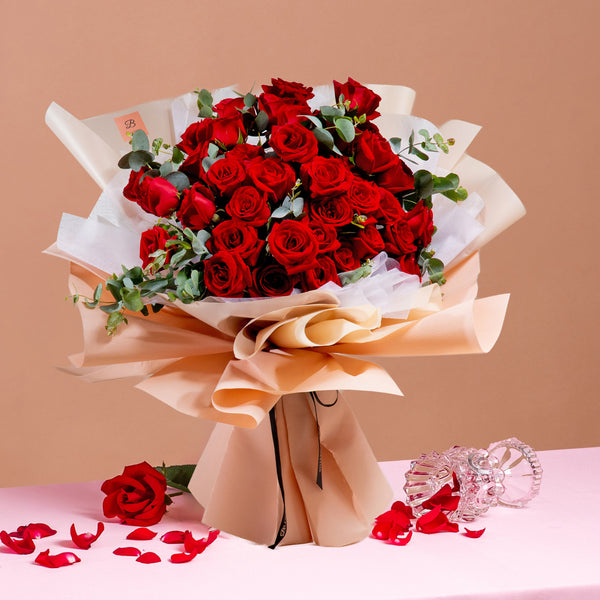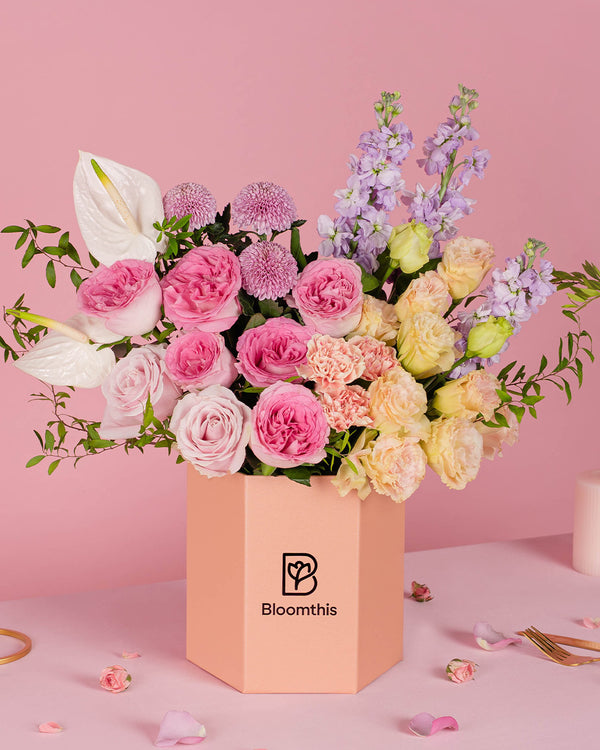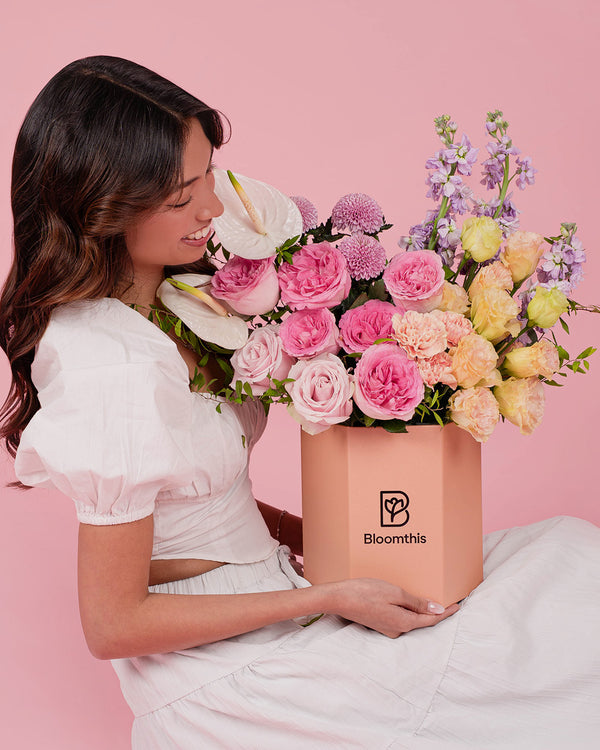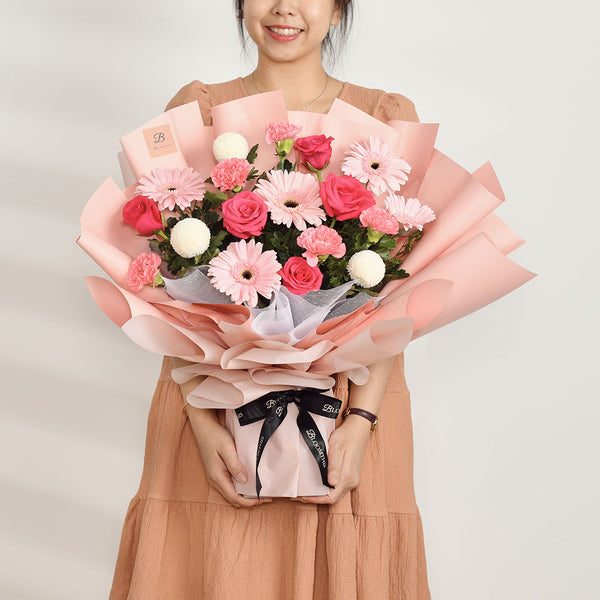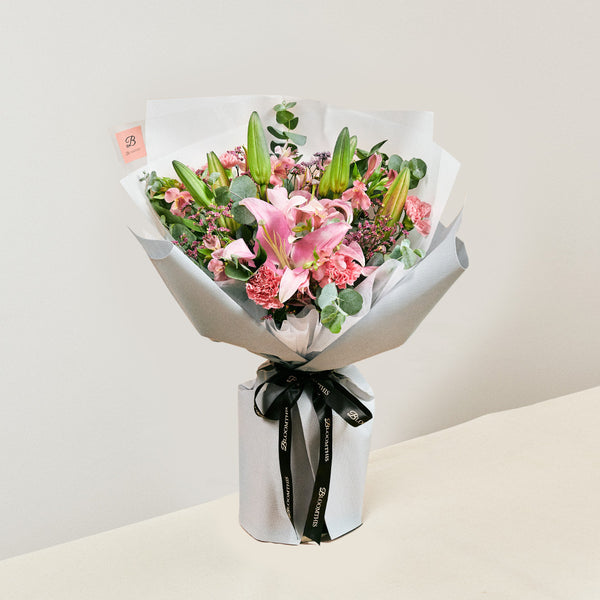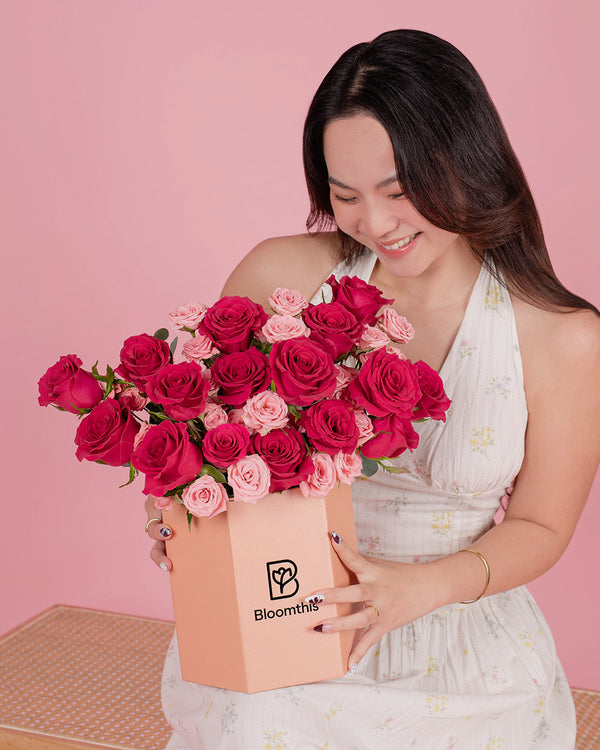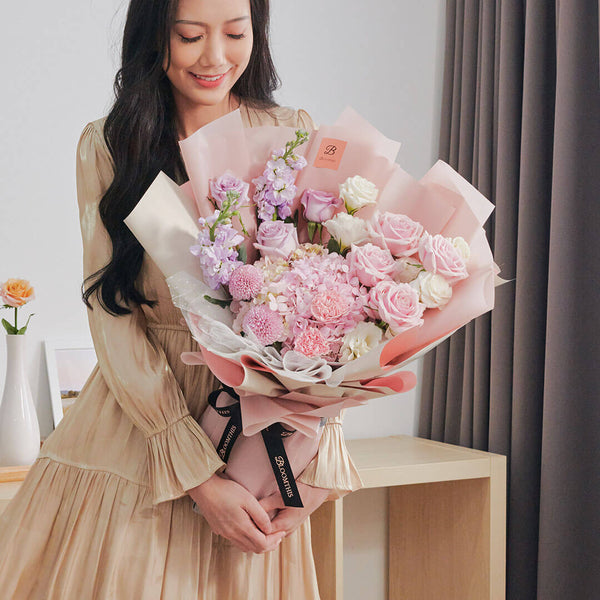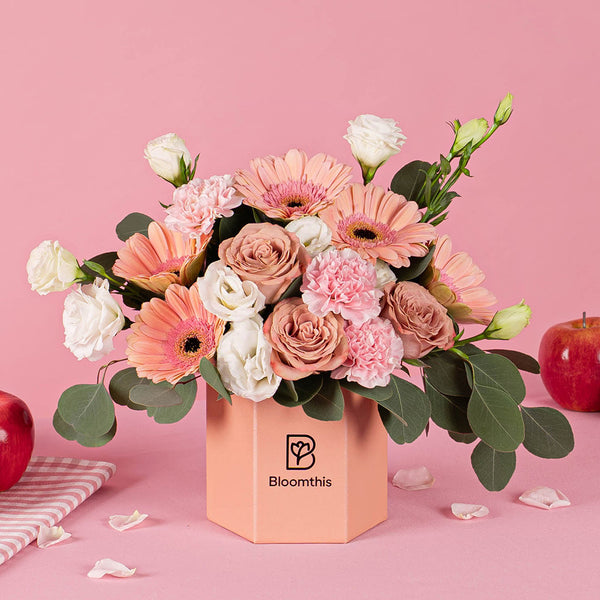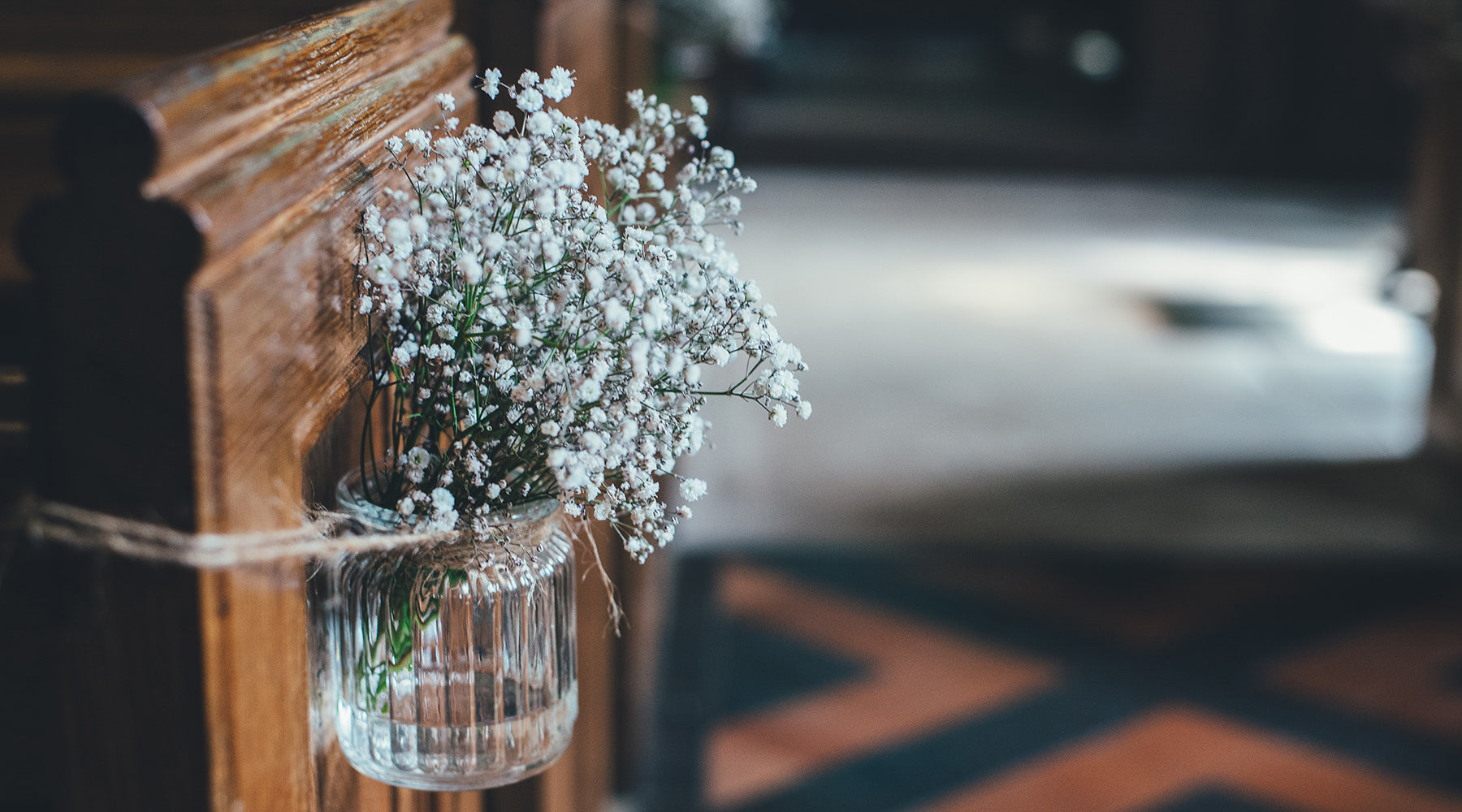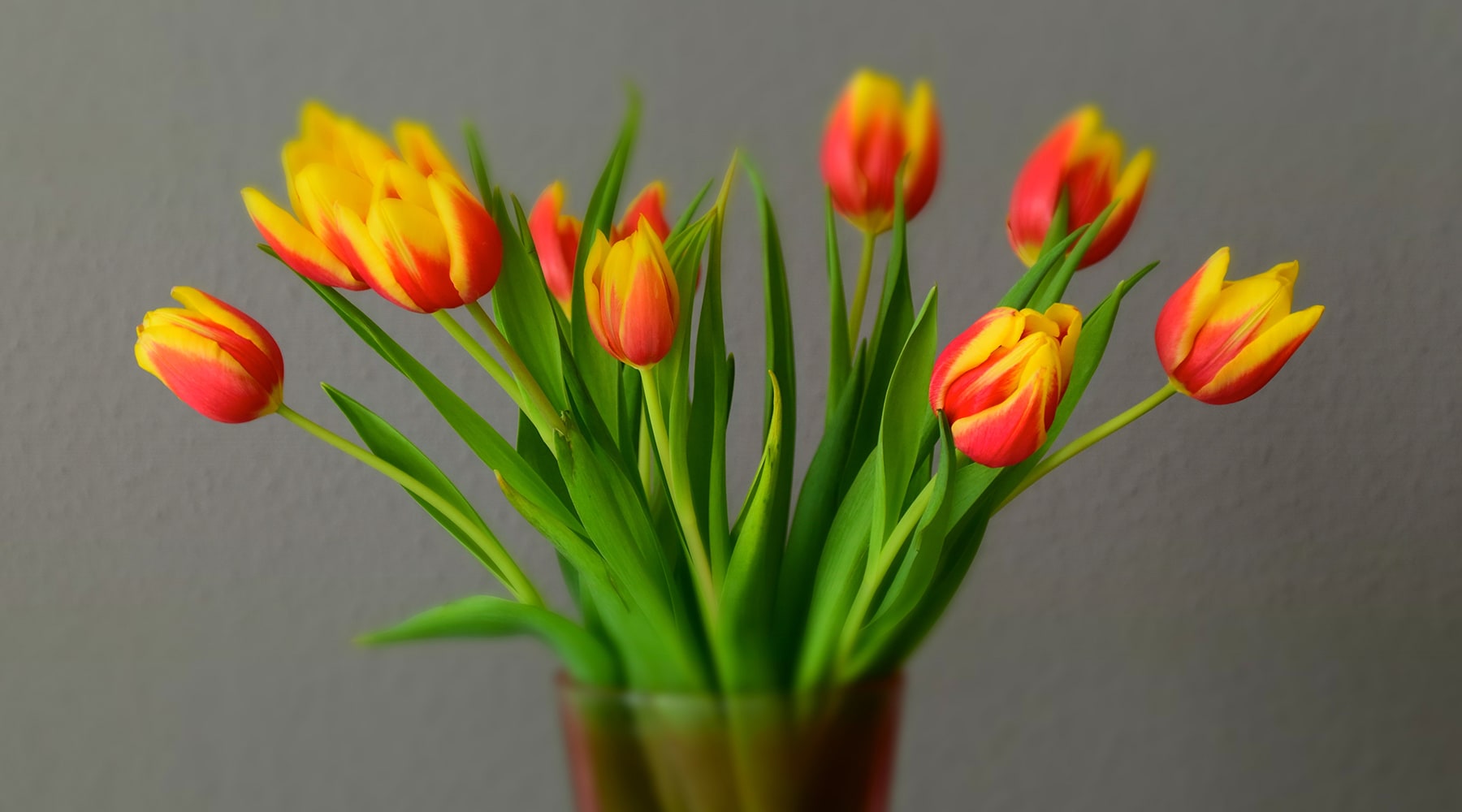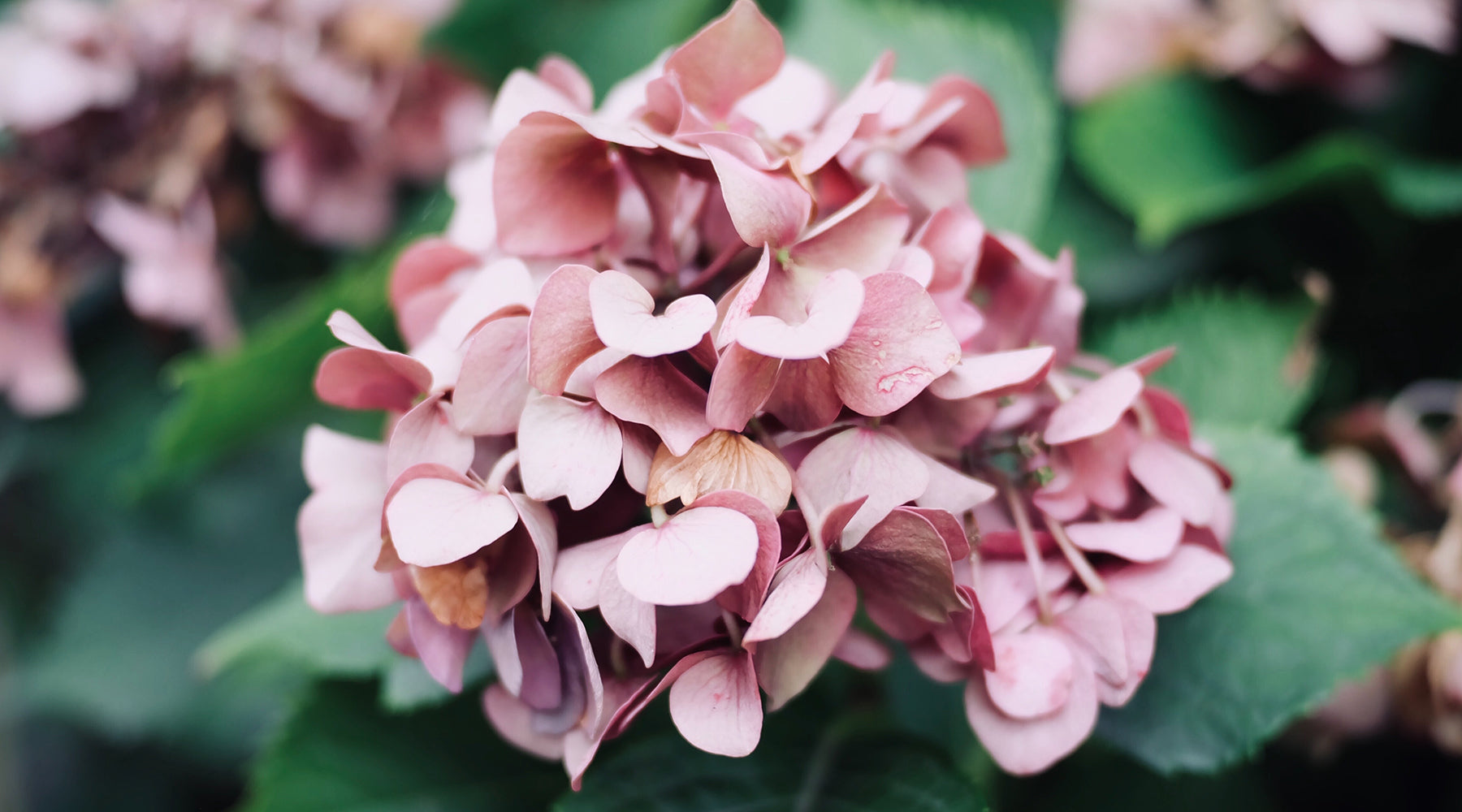
Hydrangea Facts and How They Got Their Colour
Hydrangea or also known as Hortensia is a genus of about 70-75 species of flowering plants. Hydrangea (Hydrangea spp.) is a shrub belonging to the saxifragaceous family.
The most important species are characterised by inflorescences. These flowers are a native of the Southern and Eastern Asia, from Japan, Korea, China, the Himalaya and Indonesia as well as in North and South America.
Table of Contents
- History & Origin
- Morphology
- Types of Hydrangea
- Colours of Hydrangea
- Meaning of Hydrangeas
- Uses of Hydrangea
Hydrangea was first cultivated in Japan, but ancient Hydrangea fossils dating back to 40-65 million years ago have been discovered in North America. It is said that Hydrangeas didn’t appear in Europe until 1736 when a colonist brought a North American varietal to England.
Hydrangea are mostly shrubs that can group up to 1 - 3 meters tall. However, some are small trees while some are lianas that can reach up to 30 meters via climbing up trees.
Hydrangeas can be deciduous or evergreen plants depending on the species. Most of the time, Hydrangea flowers bloom from early spring to late autumn.
History and Origin of Its Name
The name ‘Hydrangea’ originated from Latin, leading back to as old as 1739, named by Grovonius, a botanist. He thought that the shape reminded him of an ancient water pitcher. Hence, combining the words ‘hydro’ (water) and ‘angeion’ (barrel/pitcher), resulting in the name Hydrangea. The name given is said to be a perfect fit for this flower as all hydrangea varieties do indeed need a lot of water to survive.
Besides its posh name, Hydrangea is also commonly known as hortensia. This name was first coined by a French botanist, Philibert Commerson in 1771. Rumours have said that he named the flower after a woman, which could be his mistress or a well-known female astronomer, whom he was closely acquainted with.
There are also speculations that it could be a name suggested by upper class ladies as he was closely linked with Hortense de Nassau, the daughter of Prince of Nassau, whom he had met during a botanical expedition.
Whether the flower was named after a particular lady or not, some have argued that the name ‘hortensia’ loosely derives from a translation of Latin for ‘from the garden’. The Latin word ‘hortus’ means ‘garden’ and Commerson found the hydrangea in the garden of King of Mauritius along with all sorts of other flowers and plants.
However, the truth about the origin of its name still remains unresolved. (We think the mystery adds to its beauty.)
In Japan, the Japanese refer these Hydrangea plants as “Mountain Hydrangeas”. This is because they originate in the mountainous areas on the islands of Japan. These Hydrangeas are smaller in stature and have smaller leaves and delicate lacecap flowers.
Morphology
Hydrangea flowers have two flower arrangements where they grow in corymbs or panicles flowerheads, most often at the ends of the stems. The flowerheads usually contain two types of flowers: small non-showy flowers in the centre or interior of the flowerhead, and large, showy flowers with large colourful sepals.
These showy flowers are often extended in a ring, or to the exterior of the small flowers. Plants in wild populations typically have few to none of showy flowers, while cultivated Hydrangeas have been bred and selected to have larger flowers.
The commonly grown corymb style inflorescences is the "bigleaf hydrangea"—Hydrangea Macrophylla.
Types of Hydrangea Flowers
Mophead flowers are large round flowerheads resembling pom-poms or, as the name implies, the head of a mop. Meanwhile, lacecap flowers bear round, flat flowerheads with a centre core of subdued, small flowers surrounded by outer rings of larger flowers having showy sepals or tepals.
The smooth flowers are large, wild shrubs that are often planted as a hedge. The flowers are white or green in colour.
In contrast, panicle flowers have long, somewhat cone-shaped flower clusters with pink or white blossoms. Mountain flowers on the other hand, resemble lacecap Hydrangeas but have smaller flowers and leaves. They belong in the bigleaf Hydrangeas and usually have pink or blue blossoms.
Oakleaf Hydrangeas is named such because of its foliage shaped like oak tree leaves. Its leaves may be green, orange, or red with white flowers.
Lastly, the climbing Hydrangeas are a clinging vine. It is native of Asia and has also been coined as the “Japanese Hydrangea Vine”. The flowers are typically white in colour.
The Colours of Hydrangea
In most species of Hydrangea, the flowers are white in colour. However, some notable species such as the Hydrangea Macrophylla and Hydrangea Serrata can have flowers that come in a larger range of colours.
The colours can range from blue, pink, dark purple, light purple and red in colour. The soil pH level and presence of aluminium ions available for absorption by the plant plays a huge role in the colour of these species of flower.
The higher the acidity of the soil, characterised by a pH level of below 7, indicates a higher amount of aluminium ions to be absorbed. This results in a blue to deep purple colour of flowers.
On the other hand, a more alkaline soil (with a pH level of more than 7 and less aluminium ions) will result in pink to red Hydrangea flowers.
In order to achieve purple hydrangeas, the soil has to be in between the pH of 5.5 - 6.5. Because of this, it is not common to find the perfect shade of purple hydrangea without it having tinges of blue, pink or red.
Furthermore, not all species of Hydrangea are capable or are affected by the change in colour via soil acidity. For instance, white blooms remain white and cannot be changed because they do not contain colour pigments.
Hence, most white Hydrangeas are manually dyed. You can manually change the colour of white Hydrangeas by placing the dry white blooms over a pot of hot boiling dye bath before lowering them into the bath for a few seconds to get its desired colour.
The colour change of a Hydrangea flowers also depends on the heredity of a particular Hydrangea variety.
Other factors such as weather conditions (hot or cold, humid or dry), the health of the plant, and other natural factors can influence the change of colour.
Fertilising hydrangeas once or twice a year may result in a little more saturated colours simply because the health of the plant is improved.
With this being said, you can still try to change the colour of a Hydrangea plant from blue to pink, and pink to blue. However, the saturation and success rate varies.
To obtain a blue Hydrangea, aluminium must be present in the soil. Thus, aluminium sulfate is suggested to be added to the soil around the Hydrangeas, as it will help to lower the pH of the soil.
If the soil naturally contains aluminium and is acidic, the colour of the Hydrangea will automatically tend toward shades of blue and/or purple.
Next, the choice of fertiliser will also affect the colour change. A fertiliser low in phosphorus and high in potassium is helpful in producing a good blue colour.
Pink Hydrangea must not take up aluminium from the soil, hence the soil has to be alkaline.
If the soil naturally contains aluminium, in order to change the flower from blue to pink, the best course of action is to prevent the plant from taking up aluminium from the soil.
One trick that has been suggested is adding dolomitic lime a few times a year. This helps to raise the pH level of the soil. Aim to achieve soil with 6.0 - 6.2 pH level as anything above 6.4 may result in the Hydrangea experiencing iron deficiency.
Another tip is to use fertilisers with high levels of phosphorus that helps to prevent aluminium from getting into the Hydrangea system.
A fertiliser that has ratio close to 25/10/10 (Phosphorus is the middle number) would be beneficial in helping the plant to avoid bluish hue.
Meaning of Hydrangea
Other than the origin of its name, in Japan, Hydrangea is said to symbolise a sign of gratitude or apology. It was believed that in the olden days, the Japanese emperor gifted Hydrangea as apologies to maidens.
Meanwhile, some have said that giving a bouquet of Hydrangeas means that the giver is showing their heartfelt gratitude towards the recipients understanding. Other times, these flowers are also associated with honesty.
For the Europeans however, Hydrangeas carried a negative meaning for a long time. In Europe, Hydrangea used to symbolise arrogance.
It later on became synonymous with frigidity in the Medieval Era during which people believed that young women who grew Hydrangeas would never be able to find a spouse.
Some have also tied the meaning of Hydrangeas to vanity and boastfulness, a reflection of its abundance of petals and lavish, round-shaped flowers.
In today’s culture, the meaning of Hydrangeas varies in accordance to its colour:
- Pink Hydrangeas are said to carry the meaning of love and sincere emotions. They are also associated with the resemblance to a beating heart.
- Blue Hydrangeas often mean forgiveness, rejection, and regret.
- White Hydrangeas symbolise purity, grace, abundance, and bragging.
- Purple Hydrangeas signify abundance, wealth, and royalty.
Whatever the meaning of Hydrangeas is, it is undeniable that these flowers are beautiful in bouquets no matter what colour they are. In fact, they have been a popular choice as an anniversary gift for a long time.
Uses of Hydrangea
Hydrangeas are not only deeply symbolic and often used as a gift, they are also widely popular as ornamental plants. Hydrangeas are extremely versatile and work great in wedding garlands and floral arrangements.
As a gift, these flowers produce allergy-safe pollen and most types of Hydrangea do not have fragrances. Thus, ruling out the possibility of causing allergic reactions to people who are sensitive or allergic to flowers.
Not only do Hydrangeas show great appeal in the garden with their stunning looks, they are also fairly easy to plant. They often prefer shady places compared to sunny areas during the afternoon.
Also, Hydrangeas grow great in pots as they cannot have too much competition for nutrients. Large Hydrangea bushes are perfect as outdoor or front yard decorations.
Besides being a popular ornamental plants and in bouquets, the roots and rhizomes of Hydrangeas has been used for treatment of conditions of the urinary tract in the Physician’s Desk Reference (PDR) for Herbal Medicine and is said to have diuretic properties.
However, Hydrangeas are considered moderately toxic if eaten because all parts of the plant contains cyanogenic glycosides. Even so, despite the potential danger of illness and/or death due to cyanide, Hydrangea paniculata has been reportedly smoked as an intoxicant.
Although Hydrangea can be toxic when consumed, a type of Hydrangea -- Hydrangea Serrata -- leaves are famous for its use as herbal tea known as ama-cha (甘茶) in Japan.
The leaves are safe to be consumed and contain a substance known as phyllodulcin which gives a sweet taste. Thus, ama-cha when translated, means sweet tea.
The fresh leaves are crumpled, steamed, and dried, which yields dark brown tea leaves that produce optimum taste. Ama-cha is mainly served for kan-butsu-e, also known as the Buddha Bathing Ceremony on April 8 every year.
This special day is thought to be Buddha’s birthday in Japan. During the ceremony, Ama-cha is served to the people in attendance and also poured over a statue of Buddha.
Legend says that on the day Buddha was born, nine dragons poured Amrita (blessed water or drinks of the gods, which grants them immortality) over Buddha. Hence, Ama-cha was used as a substitute for Amrita in Japan.
Besides Japan, Hydrangea serrata is also used to make a Korean herbal tea known as sugukcha (수국차) or ilsulcha (이슬차).
Have you ever tried using Hydrangea as herbal medicine? Have you drank Hydrangea tea before?
What is your most favourite colour of Hydrangea flowers?
We would love to hear your thoughts and stories. Tell us more in the comments!
SHOP HYDRANGEA FLOWERS AT BLOOMTHIS
DISCLAIMER: Flowers sold by BloomThis is not suitable for consumption
Make someone's day
Send the perfect gift
